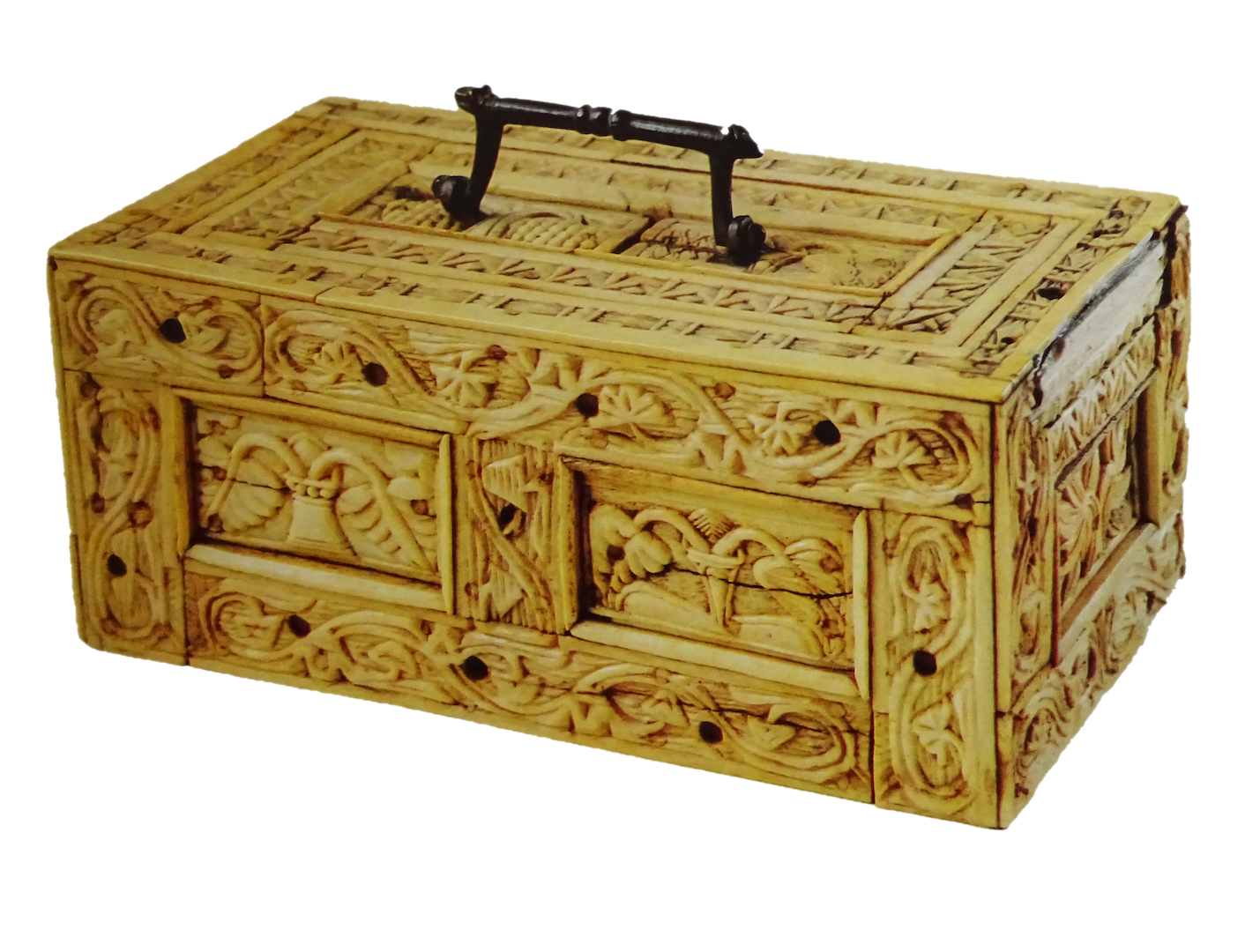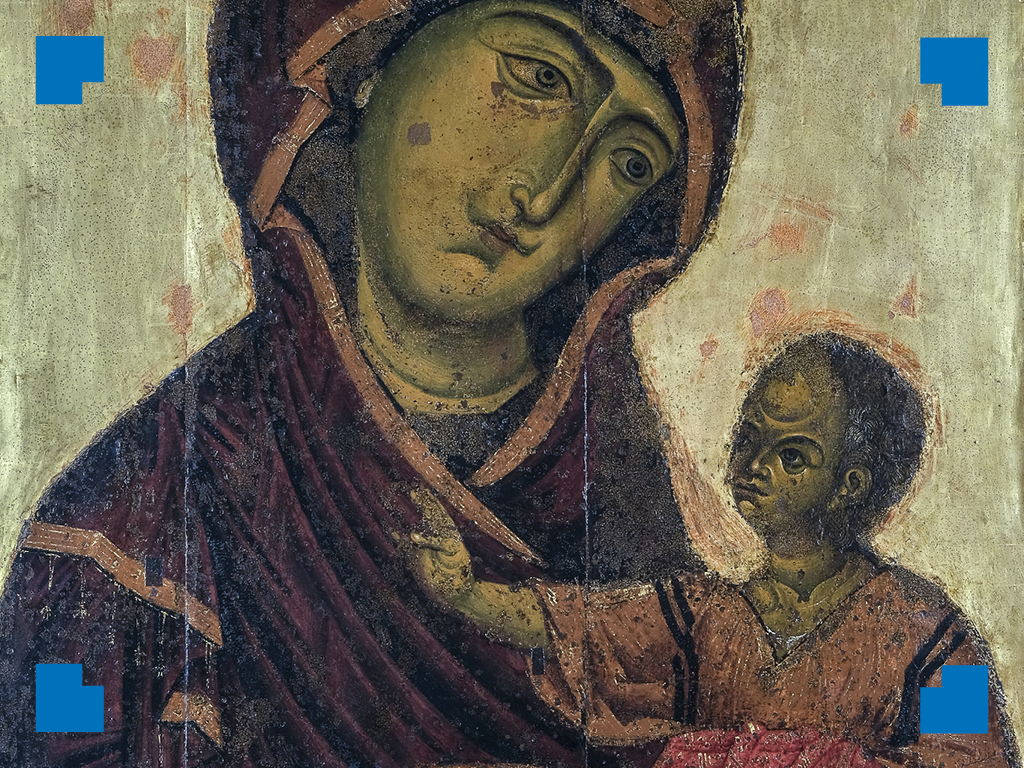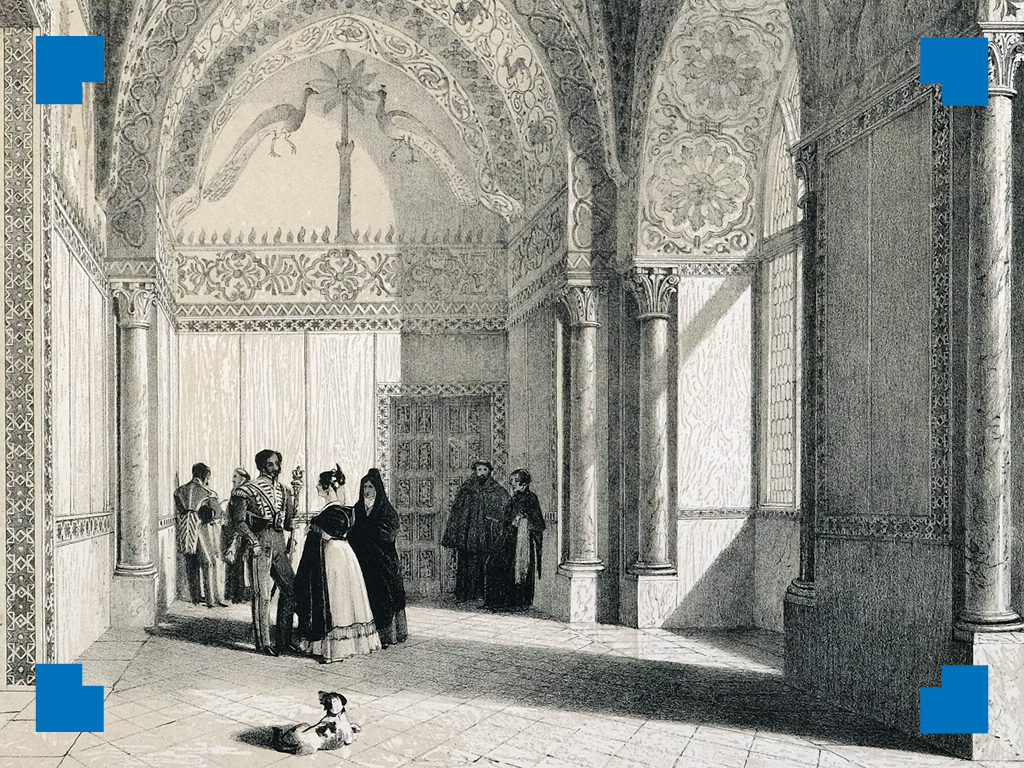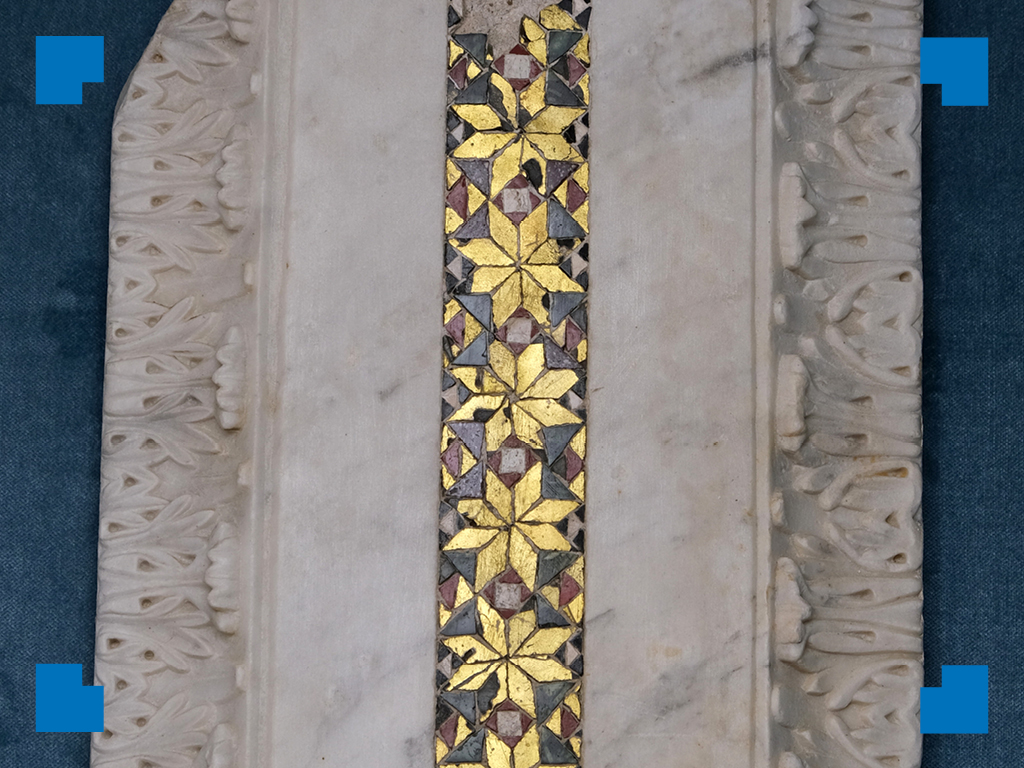
28. Casket with sliding lid
Craftsmen from Southern Italy, 11th-12th c.
Casket with sliding lid,
carved ivory plaques on wooden structure; bronze (8×18,5x10cm)
Palermo, Treasure of the Palatine Chapel, cat. 124; Ministero dell’Interno, FEC,
Dipartimento delle Libertà Civili e l’Immigrazione, Direzione Centrale degli Affari dei Culti e per l’Amministrazione del Fondo Edifici di Culto
The Palatine Chapel of Palermo has a patrimony of 15 ivory caskets, differing in shape, size, executive technique and dating, but all included in the generic definition of “Arab-Sicilian”, even though they were produced by different craftsmen, even non-Sicilian ones.
The artifact here only in virtually display is covered by ivory plates carved in bas-relief with plant motifs both in the framing and inside the mirrors of the sides and the lid, as a reference to the typical production of the eleventh- and twelfth-century craftsmen of southern Italy, between Amalfi and Salerno.
Caskets were devised to contain nuptial gifts, jewelry, perfumed essences. They were preserved for centuries because they were re-employed as relics containers.
With the nineteenth-century revival, objects that refer to these artifacts became fashionable and started to be created with no specific utility, but only as unique and precious pieces of furniture (cat. 23).


